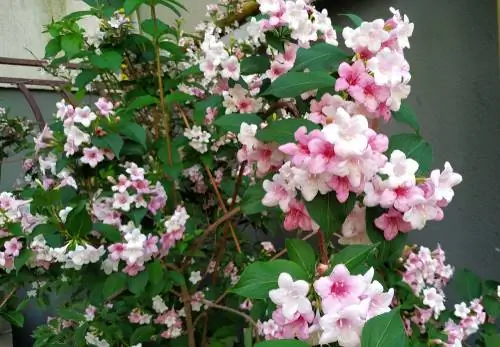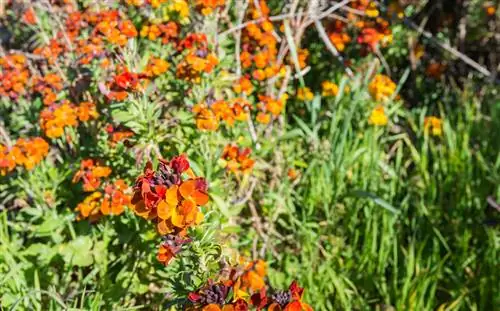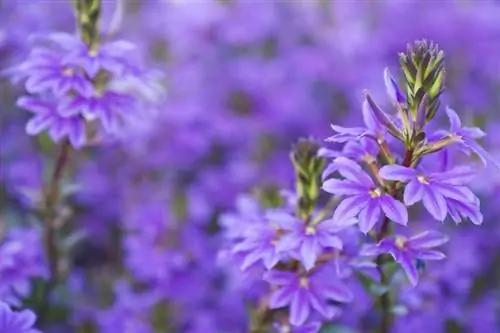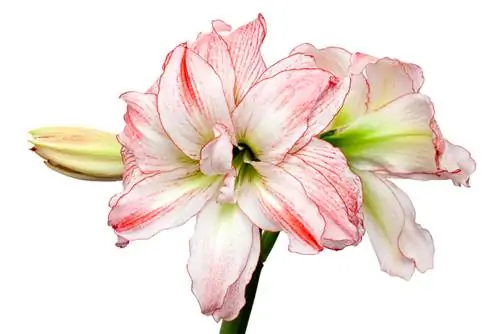- Author admin [email protected].
- Public 2023-12-16 16:46.
- Last modified 2025-01-23 11:21.
The Kolkwitzia is characterized by a shimmering spring fairytale of mother-of-pearl flowers and sprawling growth. Since the picturesque flowering tree tends to become bald, you should use scissors to regulate it every few years. In this guide you can read when and how to cut the mother-of-pearl bush correctly.

When and how should you cut a Kolkwitzia?
To prune the Kolkwitzia properly, carry out a topiary at the end of June. Thin out every two years in winter and stake young kolkwitzias to promote upright growth.
Topiary at the end of June
When it is young, knowledgeable gardeners let the Kolkwitzia grow uncut. The reward for this foresight is an opulent, romantic silhouette with elegantly overhanging, flower-filled shoots. Only when the ornamental tree with a height and width of up to 4 meters exceeds the available space capacity does a topiary curb the growth. How to cut your mother-of-pearl bush correctly:
- The best time is the end of June/beginning of July, after the end of the flowering period
- Cut back excessively long shoots into the desired bush shape
- Make each cut 3-5 mm above an eye, a bud or a young side shoot
Summer topiary focuses on this year's growth and is done in good time before new flower buds appear. Only plan the pruning measure if necessary, as precautions against progressive baldness take place during the leafless period.
Young Kolkwitzie sticks
Young Kolkwitzias often tend to grow more in width than in height and resemble a ground cover. You give the growth the desired upright direction by staking the bush. To do this, tie all shoots loosely around a bamboo stick with a wide ribbon. As lignification progresses, the shoots become more stable, so that the band and rod can be removed.
Thinning out every 2 years in winter
Nature lovers among hobby gardeners ignore recommendations to thin out the Kolkwitzia in conjunction with a summer topiary. Every thinning cut has profound effects on the flowering tree, which are prohibited during the legal grace period. According to the Federal Nature Conservation Act, the time window for thinning out bushes is open from October 1st to February 28th. By following this cut, the next flowering period will remain without any noticeable losses:
- In the first step, saw off dead, bare ground shoots at the base
- If there is no dead wood, cut off two to four of the oldest scaffold shoots at ground level
- Select vital young shoots as replacements and leave them standing
- Remove remaining ground shoots with weak growth
If you have doubts about the age of a ground shoot, take a look at the color and texture of the bark. Young wood of a Kolkwitzia is reddish-green to light brown and hairy. You can recognize old wood by its dark brown, rough bark. To determine whether a shoot is alive or dead, scrape off a little bark. If green tissue appears, it is not dead wood. Brown, dry tissue reveals the shoot to be lifeless.
Tip
During early summer topiary, you will come across numerous shoots that, as cuttings, turn into magnificent Kolkwitzias. Choose semi-woody, non-flowering head cuttings 15 centimeters long. Pots with lean potting soil and a bright, warm location are advantageous for rapid rooting.






